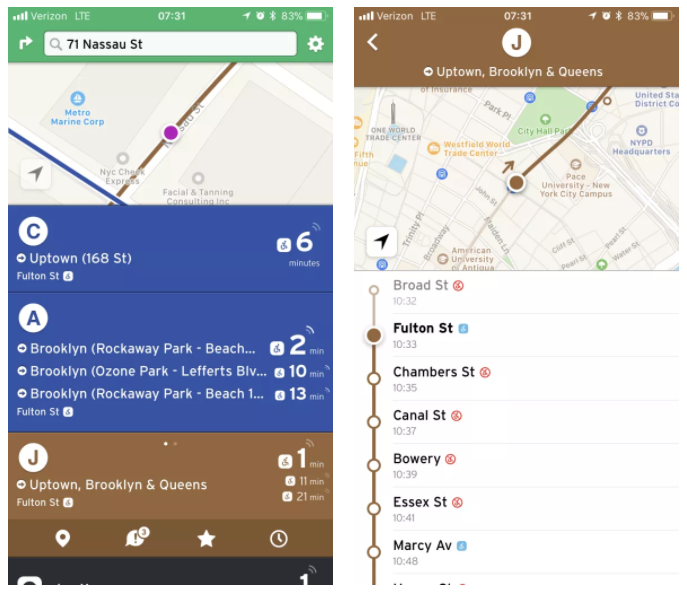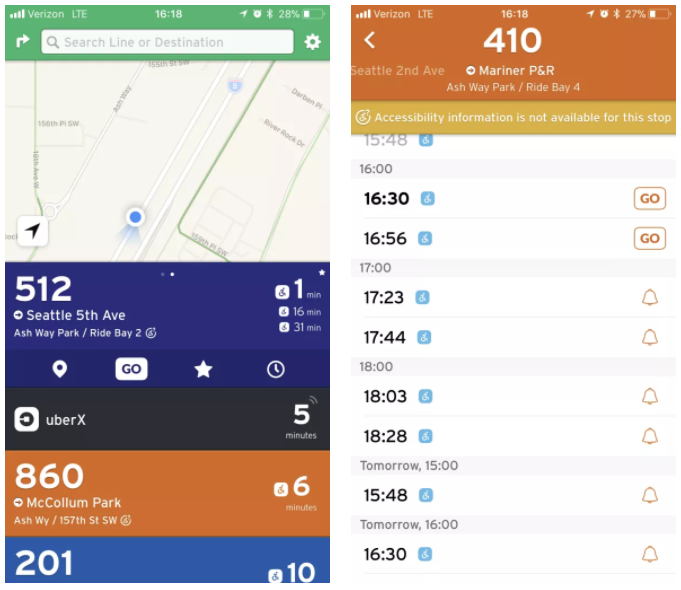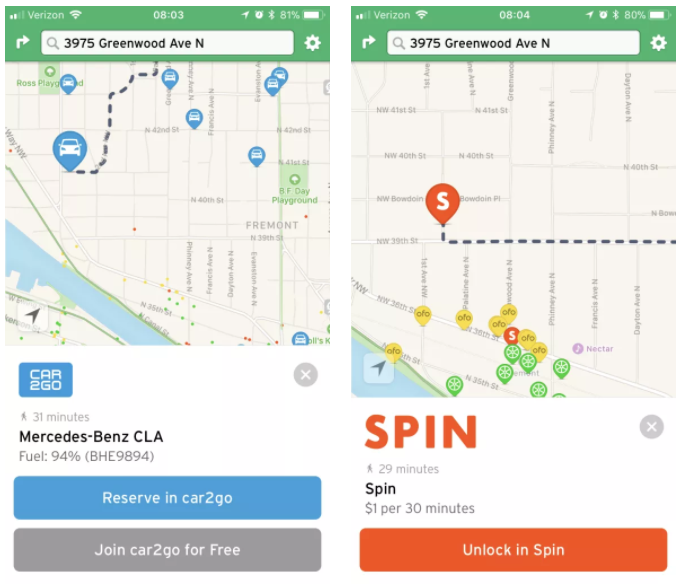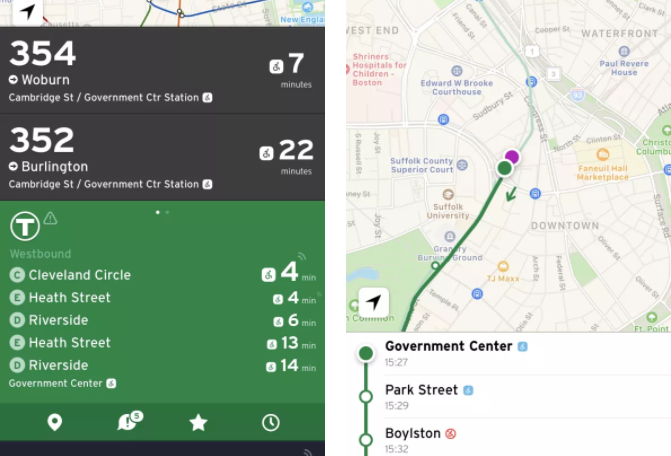Transit App’s most recent update now includes accessibility information for some 230 transit agencies, including Community Transit locally. The information is fairly basic, showing whether or not accessibility features are available on a particular service or at a stop. It does not, however, specify what type of accessibility features are available (e.g., elevator, ramp, or lift). Still, the information moves in the right direction since many agencies have serious gaps in accessibility features.
Scores of subway stations in New York City, for instance, are only accessible by stairs with no lift or elevator options. For those who are mobility challenged, knowing that another station two blocks away is an alternative is incredibly helpfully.

Locally, most transit agencies do not support the accessibility information in publicly available data. Because of this, Transit App displays unknown information. It’s safe to say most if not all agencies provide accessibility options for riders, but individual stops may not be designed for true accessibility. Visitors and new riders likely don’t know what the accessibility landscape looks like in the region, which Transit App hopes to eventually demystify with its accessibility solution.
Sound Transit and King County Metro Transit plan to more widely provide accessibility information in their transit data. “Our data feed includes only limited accessibility information at this time,” said Kimberly Reason, a spokesperson for the transit agency. “At some time in the future (no specific ETA), we will be looking into making this data more complete and accurate. Such an effort will require working with our interagency partners on data collection, validation, and process improvements.”

Right now, only ST Express routes operated by Community Transit have rudimentary accessibility information, but not stop-level accessibility information. The same goes for Community Transit routes generally.
“Metro plans to update our GTFS data feed in 2019 to include additional information such as wheelchair accessibility,” said Scott Gutierrez, a spokesperson for Metro. “We plan to make it more consistent with Metro’s Trip Planner app, which includes information on accessible stops when customers click the ‘Accessible Trip’ option under the advanced options menu.”
Transit App will continue to refine and improve its accessibility information going forward. Perhaps that could include more specific means of accessibility (i.e., elevator versus ramp). Users can turn on the information by going to the app settings.

Aside from accessibility, Transit App improved the cards and pins that appear for bikeshare, Car2Go, and dockless rental bike providers. The cards are larger and activated pins balloon. Zooming out now reduces clutter that dots for these services can create and frees up data and speed. Users might also notice that walking distances are also improved and that branch line cards have been simplified through consolidation.
Transit App Gets Modest Year-End Improvements in Version 4.3.2 Update
Stephen is a professional urban planner in Puget Sound with a passion for sustainable, livable, and diverse cities. He is especially interested in how policies, regulations, and programs can promote positive outcomes for communities. With stints in great cities like Bellingham and Cork, Stephen currently lives in Seattle. He primarily covers land use and transportation issues and has been with The Urbanist since 2014.


